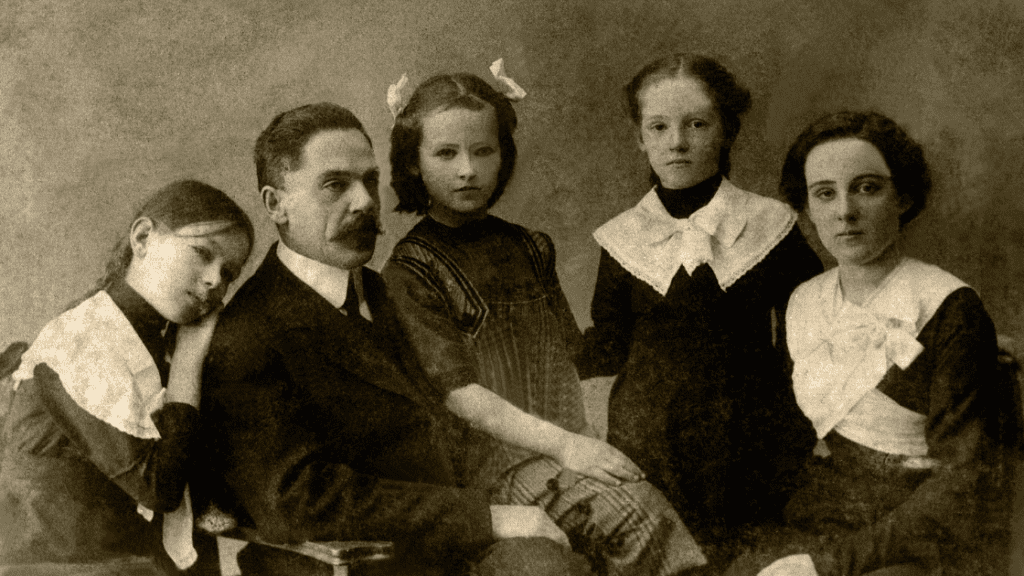Family photo traditions have changed and evolved since pre-camera days when family portraits were reserved for wealthy families that could commission paintings. As cameras came on the scene, family photos quickly became a part of every family gathering, birthday celebration, anniversary, or holiday. We can all relate to being with family, having a good time, chatting, laughing, and sharing food, and having someone say, “Let’s take a picture!” We all rush to gather around, squeeze in, and smile. Someone holds up a camera or a phone and snaps the photo. Seeing and sharing the image brings back all the emotions and love felt on that occasion.
Taking family photos is a universal experience that transcends cultures, languages, and generations. Family photos are more than just images; they’re emotional treasures that tell stories of our lives. But how did this tradition start? How did family photos evolve over time? And what do they mean to us today?
In this article, we will explore the evolution and emotion behind family photographs. We will look at the historical roots of family photography, the transformation of significance, the glimpse into family life, the shaping of the idea of family, the emotional connection, the ritual of capturing moments, and family photography in the digital age. We will also reflect on the timeless value of family photos, why they matter to us, and what we can do to preserve family photo traditions through the generations.
The Historical Roots of Family Photo Traditions

Long before the click of a camera, family portraits were a privilege reserved for the elite. Painted meticulously, they adorned the walls of noble houses and were used to display status, wealth, and lineage. They were also used to commemorate important events or milestones in the family history.
The invention of photography in the 19th century changed the game. Suddenly, families of all backgrounds could capture their legacy in a single frame. It was cheaper, faster, and more realistic than painting and allowed for more spontaneity and creativity in capturing family moments. This democratization of family photography marked a turning point in our connection to the past.
Photography quickly became a popular medium for documenting family life. Families could visit studios or hire photographers to take their pictures. As cameras were more available, people were able to take their own pictures at home or outdoors. They could then have photos printed and store them in albums or frames and share them with others. This often gave families a sense of identity and belonging.
The Transformation of Significance
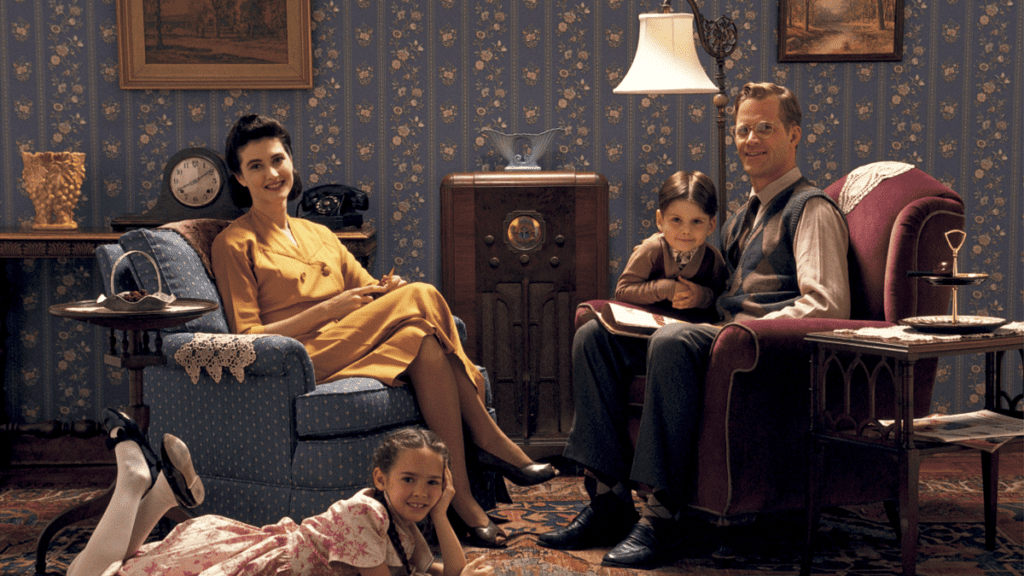
Posed, rigid, and formal – early family portraits were meticulous displays of appearance. However, over time, a shift occurred. Those frozen moments began to thaw, revealing authentic emotions and genuine connections. Candid laughter, shared glances, hugs, tears, or the tangled mess of a playful sibling fight – family photos morphed into touching storytellers. They illustrated not only how we looked, but the unique personalities and dynamics that shaped family life: the quirks, the jokes, the conflicts, the bonds. This made them cherished family treasures to be passed down from generation to generation.

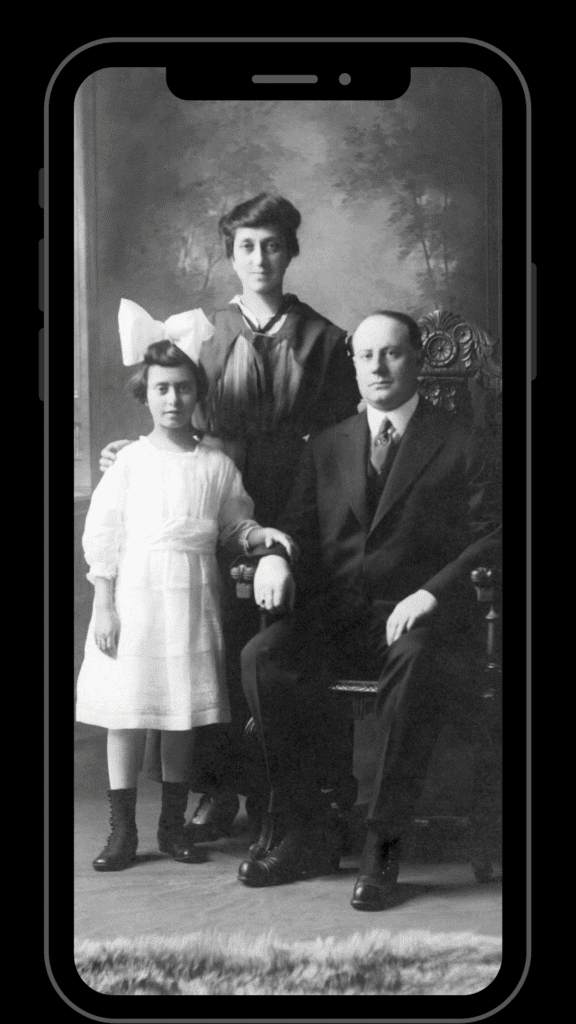
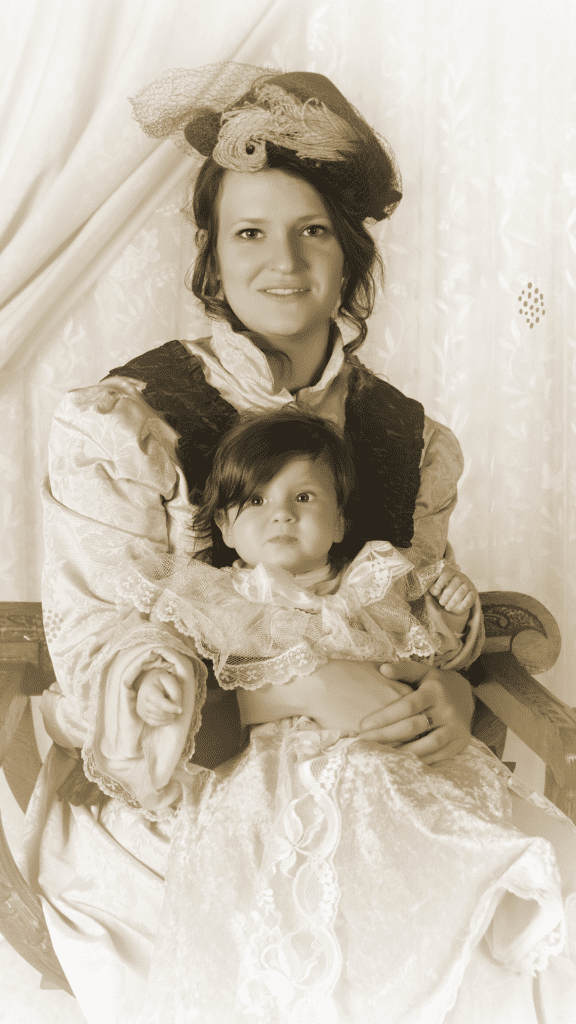
Shaping the Idea of Family

Hold a family photograph, and you’re holding a portal to the past. Snapshots are more than ink and paper; they are time machines, transporting us to moments long gone. They encapsulate the magic of childhood, the warmth of a parent’s embrace, and the promise of a new chapter. In their silence, they whisper tales of joy, sorrow, and unbreakable bonds. With each click of the shutter, they can construct the framework of shared history, provide valuable information about our roots, and instill valuable appreciation for the cultural traditions of our heritage.
Because family photographs are so infused with memories and meaning, they aren’t just documents; they are also architects of our perceptions. They craft a visual blueprint of how family life has evolved throughout our lineage. Images of our ancestors reveal details that may not have been shared in writing or conversation. What they wore, where they lived, what they did, and how they related to others can be very evident in family photos. By giving us a perspective that may not have been considered or understood then or now, we gain insight not only into what their lives were like, but how to navigate our own.
Images can also show us an expanded vision of what family can be. Our photographic memories might include not only our biological relatives but also our adopted, foster, or step relatives. They can depict how we welcome friends, neighbors, or pets into our extended family, and record the ways in which blended families benefit from diversity and inclusion.
Emotional Connections and Rituals
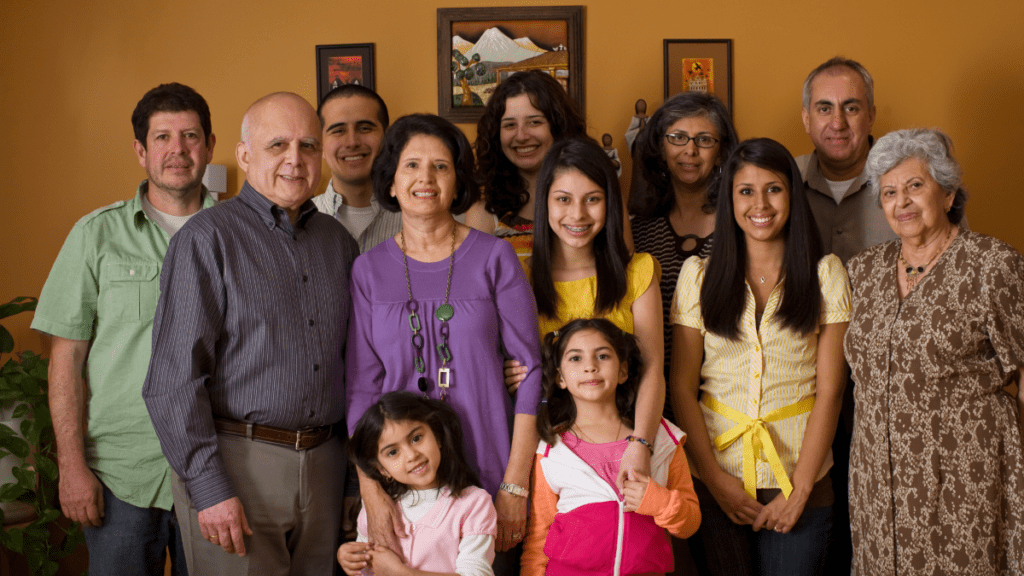
One of the most powerful aspects of family photographs is the way that they evoke emotions in us. Leafing through a photo album can elicit nostalgia, happiness, sadness, and a sense of belonging. In times of solitude or strife, photographs extend a hand, reminding us that we belong to something greater. Remembering the good times and reminiscing about family can inspire us to rekindle or nurture relationships and strengthen bonds.
Another significant aspect of family photographs is that they are part of a ritual that we perform during special occasions. They happen when we collectively decide to pause, smile, and commemorate the moment. The tradition of photo taking acknowledges that time is fleeting and emphasizes the importance of stopping to mark important events or milestones in our family life.
Beyond the Frame: The Digital Age
The advent of digital technology has transformed the way we take, store, and share family photographs. We have moved from physical photo albums to digital galleries, from prints to pixels, from frames to screens.
The transition from physical to digital has brought some advantages and disadvantages to our emotional connection with family photographs. On one hand, digital technology has made it easier, faster, and cheaper to take, store, and share family photographs. We can take more photos, store more photos, and share more photos with more people. We can also edit, enhance, and customize our photos according to our preferences. And they can be remotely interactive through the ability to like, comment, or tag them on social media.
Even though convenience reigns with the shift from physical to digital, digital technology has in some ways made it harder, slower, and more time-consuming to access, organize, and enjoy family photographs. We may have too many photos, too many devices, and too many platforms. We may also lose, damage, or forget our photos due to technical issues or human errors.
Finding a Balance Between Old and New
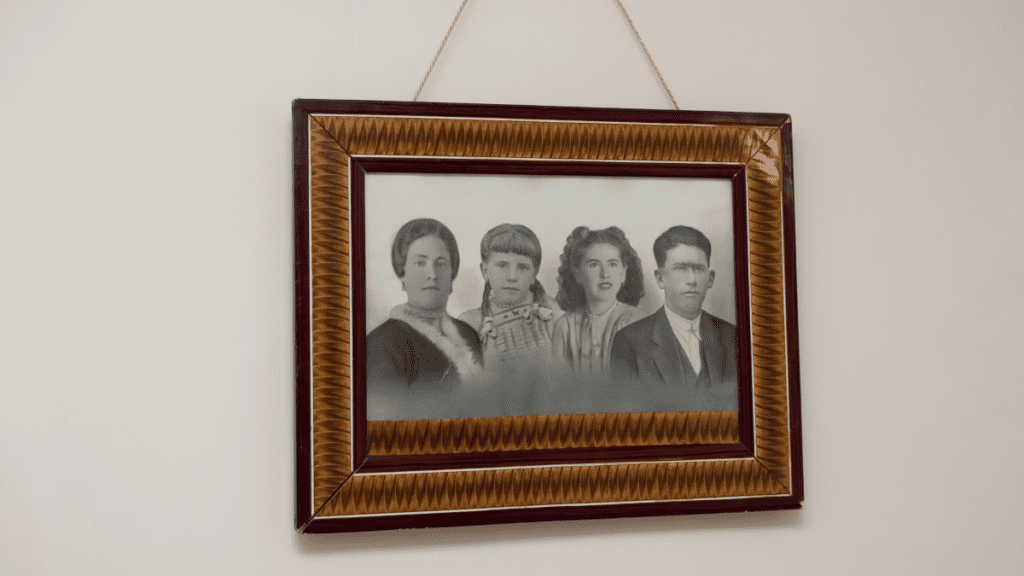
These changes have given rise to a debate – does the digital era compromise the emotional resonance of family photographs? While they can now be carried in our pockets, the tactile connection of a physical album holds an irreplaceable charm. Digital images are less tangible, less permanent, and less special. Discovering a balance between the old and the new, between the physical and the digital, between the quantity and the quality may be the best way to keep our emotional connection with family photographs alive and strong.
Family photo traditions are threads that weave the tapestry of our lives. Photographs tell stories of generations, encapsulating moments that shape our existence. From their historical roots to the emotional impact they deliver, these photographs are bridges connecting our past, present, and future. In a world that’s ever-changing, family photographs are timeless anchors, reminding us of who we are and the love that binds us. So, the next time you gather for a family photo, remember – you’re not just capturing an image, you’re capturing a piece of eternity.


